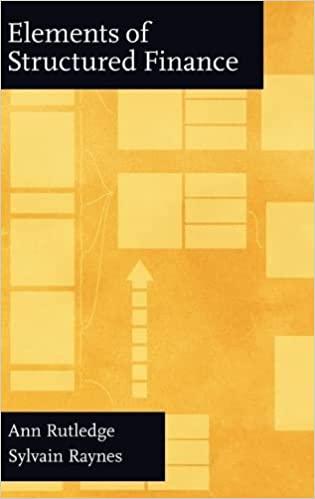Question
Current Asset Usage Policy Payne Products had $1.6 million in sales revenues in the most recent year and expects sales growth to be 25% this
Current Asset Usage Policy
Payne Products had $1.6 million in sales revenues in the most recent year and expects sales growth to be 25% this year. Payne would like to determine the effect of various current assets policies on its financial performance. Payne has $1 million of fixed assets and intends to keep its debt ratio at its historical level of 30%. Payne's debt interest rate is currently 10%. You are to evaluate three different current asset policies: (1) a restricted policy in which current assets are 45% of projected sales, (2) a moderate policy with 50% of sales tied up in current assets, and (3) a relaxed policy requiring current assets of 60% of sales. Earnings before interest and taxes are expected to be 12% of sales. Payne's tax rate is 25%.
What is the expected return on equity under each current asset level? Do not round intermediate calculations. Round your answers to two decimal places.
| Restricted policy: | % |
| Moderate policy: | % |
| Relaxed policy: | % |
In this problem, we have assumed that the level of expected sales is independent of current asset policy. Is this a valid assumption?
I. Yes, this assumption would probably be valid in a real world situation. A firm's current asset policies have no significant effect on sales. II. No, this assumption would probably not be valid in a real world situation. A firm's current asset policies may have a significant effect on sales. III. Yes, this is a valid assumption. The current asset policies followed by the firm mainly influence the level of long-term debt used by the firm. IV. Yes, this is a valid assumption. The current asset policies followed by the firm mainly influence the level of fixed assets. V. Yes, this is a valid assumption. Sales are controlled only by the degree of marketing effort the firm uses, irrespective of the current asset policies it employs.
-Select-IIIIIIIVVItem 4
How would the overall risk of the firm vary under each policy?
The restricted policy leads to a -Select-higherlowerItem 5 expected return as compared to moderate & relaxed policies. -Select-HigherLowerItem 6 current assets in a restricted policy would imply -Select-higherlowerItem 7 liquid assets; thus, the firm's ability to handle contingencies -Select-would bewouldn't beItem 8 impaired. -Select-HigherLowerItem 9 risk of inadequate liquidity would increase the firm's risk of insolvency and thus -Select-decreaseincreaseItem 10 its chance of failing to meet fixed charges. Conversely, a relaxed policy means -Select-higherlowerItem 11 liquid assets and -Select-higherlowerItem 12 total assets turnover ratio. In the relaxed policy, -Select-higherlowerItem 13 liquidity would decrease the firm's risk. The -Select-restrictedmoderaterelaxedItem 14 policy falls between the two extremes.
PLEASE HELP!!
Step by Step Solution
There are 3 Steps involved in it
Step: 1

Get Instant Access to Expert-Tailored Solutions
See step-by-step solutions with expert insights and AI powered tools for academic success
Step: 2

Step: 3

Ace Your Homework with AI
Get the answers you need in no time with our AI-driven, step-by-step assistance
Get Started


